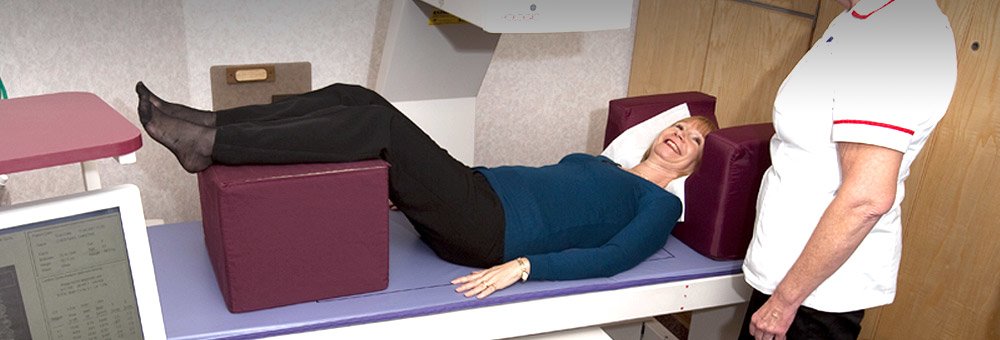
You are here: Home > Our Services > Imaging > Bone Density Scans
Bone Density Scans
St Anthony’s Hospital offers a high quality bone densitometry and osteoporosis advisory service to patients and clinicians. The scanning is performed using recognised “gold standard” equipment. All examinations are undertaken by dedicated Senior Radiographers with a special interest in osteoporosis.
A special scan called DXA (dual energy X-ray absorptiometry), is used to measure bone density and the risk of fracture.
A DXA scan is a fast, simple, painless procedure using a very low dose of radiation. Generally, clothing does not have to be removed but dressing to avoid metal at the hips or along the spine is suggested.
A relevant medical and lifestyle history is obtained prior to scanning to assess risk factors for osteoporosis.
A DXA scan produces a print out in which your bone density is compared to those of your age group (Z score) and to a reference range of young healthy adults with average bone density.
The difference between this average and your bone density is then calculated and expressed in terms of standard deviations (S.D.) to give a T score.
A T score between:
0 and -1 indicates normal density
-1 and -2.5 is termed osteopenia
Below -2.5 is classed as osteoporosis
The analysed results of the scan and a detailed report by a Senior Radiographer and/or a Consultant Radiologist with a special interest in osteoporosis are sent to the referring clinician.
Osteoporosis means ‘porous bones’.
It occurs when the struts which make up the mesh-like structure within the bones weakens causing bones to become fragile and break easily.
Bone cells are constantly at work, building new bone and breaking down the old. From our 40s onwards this process slows and our bones gradually lose their density. Osteoporosis is commonly linked to post menopausal women as bone density loss is faster in the years following the menopause when the oestrogen levels drop. This can lead to osteoporosis and broken bones, also known as fractures.
However, men, younger women and children can also be affected by osteoporosis.
Osteoporosis can also be induced by certain drugs and is associated with a number of medical conditions.
Osteopenia is when the bone is less dense than average and depending on your T score and other risk factors, lifestyle changes may be the suggested treatment.
The Fracture Risk Assessment Algorithm (FRAX) is a new approach to the use of DXA that uses clinical risk factors to calculate the 10 year probability of a major osteoporotic fracture. (www.shef.ac.co.uk/frax)
There are a range of drug therapies available and these work by slowing down the cells that break down old bone and allow the cells that re-build bone to work more effectively, to improve bone density.
These treatments should be accompanied by advice on lifestyle changes, e.g. improved calcium diet and a weight bearing exercise regime.
Lifestyle Factors
Our genes are the key to deciding the size and strength of our skeleton, but the way we live our life can also play a part in our bone strength.
A healthy, balanced diet will help provide the necessary vitamins and minerals, calcium and vitamin D vital for strong bones. Vitamin D helps your body absorb calcium. The best source is sunlight and 15-20 minutes of sun exposure every day in the summer will provide enough vitamin D for the year.
Regular weight bearing exercise e.g. brisk walking, aerobics or dancing can help the skeleton to grow stronger.
Smoking and excessive alcohol intake are also significant risk factors.


 Click here to get help
Click here to get help